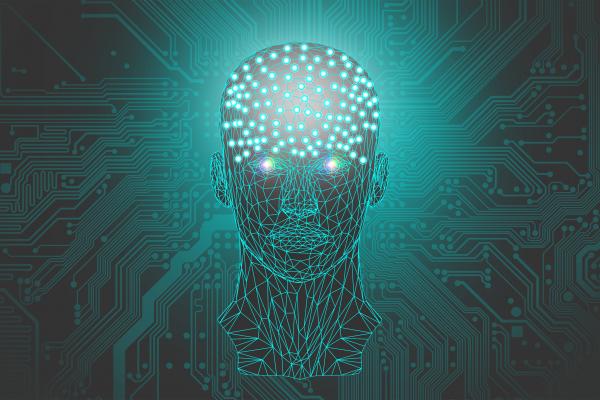
Artificial Intelligence (AI) is a hype. That is not new. It was already a hype three times before: in the 60s, 80s and around the turn of the century.
Only that hype is different now than before. Major powers such as the USA, China and Russia invest billions of euros annually in research and development in AI. Leading international companies, Google, Facebook, Amazon and Tesla, invest impressive amounts of research and development in AI, in order to acquire a monopoly position on sub-domains in AI. All other companies, especially the banks, have set up large internal departments for AI development. Conferences about AI, which for decades were mainly attended by academics, are now being flooded by researchers from companies.
How did we get there? What is the focus of that domain, Artificial Intelligence? Which social and ethical implications does this development have? What can we expect for the future?
These are the central questions that will be discussed in this lecture.
Daniel’s Professional Life
PhD in mathematics at KU Leuven (1983), since 1990 a qualified researcher and research leader at FWO-Vlaanderen, since 1992 professor at KU Leuven.
As a 33-year-old, he acquired the Belgian Francqui Chair in 1989, for his work in automatic program analysis and transformation, and the Belgian SWIFT award in 1990.
Member of the board of the Department of Computer Science over a period of 12 years, as head of the Informatics department (2000-2008) and as vice-departmental chairman (2010-2014). Program director of the Advanced Master of Artificial Intelligence for 16 years (1997-2004 and 2008-2016).
Has introduced thousands of students and the general public into artificial intelligence through his courses, lectures and panel contributions. Gave advice on artificial intelligence in the media, in the Belgian Parliament and in the Flemish Academy of Sciences and Art.
Main force in the conception and setting up of the Advanced Master of Digital Humanities and program director of Master of Digital Humanities, 2015-now. PR coordinator for the Department of Computer Science, 2005-2014. Member of the board of directors of the Faculty of Sciences, 2014-now. Chairman of 10 exam committees, in the faculties of Engineering and Sciences. Chairman of the ZAP evaluation committee of the Faculty of Engineering Sciences, 2009 and 2014-now.
Published more than 150 articles in peer-reviewed international conferences and journals. Is editor for the ACM Transactions on Computational Logic, for the area of Logic Programming (2000-now). Was Belgian representative in ERCIM for 5 years.
Research interests: programming languages, formal analysis and transformation of programs, knowledge representation, automated programming, constraint programming, music generation, and humour generation.
Note: Content and images not intended for copyright infringement.
On 10 March 2019, the world was shocked by the crash of an Ethiopian airlines Boeing 737 MAX, which took the lives of all 157 passengers and crew. A similar accident involving the same model Boeing took place five months earlier in Indonesia. The given model is completely automated and overrules the human pilot. Here is the example of artificial intelligence (AI) in practice. It shows how important it is in our lives and how cautious we have to be with it.
Artificial Intelligence was the subject of the ISG monthly meeting which took place March 11 at Chateau St. Anne. The lecture attracted a big audience, indicating that our members are interested in what is going on now in the sciences and in such complicated spheres as AI. Our lecturer was Professor Daniel De Schreye, who has been involved with AI for the last 35 years. In 1983, he received his PhD in mathematics at KU Leuven, and since 1992 he has been a professor there. In his long career, he has introduced thousands of students and the general public to artificial intelligence through his courses and lectures.
To facilitate understanding of complex issues, the professor provided his ISG lecture with graphic materials. The progress made by AI can be demonstrated over time if we look at chess matches between the world champion Gary Kasparov and a computer. The first such match took place in 1989 and the chess player won. The second took place in 1996 and out of three matches Kasparov lost one. The third match in 1997 was won by the machine “Deep Blue”, an advanced computer. A year ago, for the first time a machine won a poker game against a human – another example of recent successes of AI researchers. And before that, a computer won a Go game, which is supposed to be one of the world’s most complicated games.
At present, major powers such as the USA, China and Russia are investing each year billions of dollars in research and development of AI. Scientists first try to define the areas where AI could be used and then develop realistic solutions. Researchers are concentrating on technical aspects to achieve full replacement of human intervention in various processes. This brings to mind what occurred at the end of the 18th and start of the 19th centuries during the first wave of industrialization. Manufacturers tried to put power looms into factories in England and this led to riots. English workers destroyed the machines, which deprived them of their livelihood. But somehow the world has adjusted, and I presume we will adjust today.
The professor named for us a few of the most advanced AI systems. There is “Deep Blue,” mentioned above, an IBM creation which defeated the world chess champion Gary Kasparov. “Watson” is a promising IBM development capable of understanding human speech and performing probabilistic searches using a large number of algorithms. “MYCIN” is one of the earliest expert systems that can diagnose a small set of diseases, often as accurately as doctors. “ViaVoice” is used for speech recognition. Banks are already using artificial intelligence systems in insurance activities (actuarial mathematics), when playing the stock market and for managing property. Professor Daniel De Schreye gave a very exciting example how AI functions- a chat with Daniel –a machine. “I am Daniel -Nice to meet you, Daniel. Who are you? -I ask myself that. -Which is your favourite subject? -My favourite subject is artificial intelligence.”
In spite of great progress, drawbacks remain, like no feedback from a machine and it does not reason. In spite of the drawbacks, AI use is spreading. Among its current applications are: • Data-mining, which needs researchers and is time consuming, but for a machine it is convenient and fast. • Another application can be found in your supermarket. Machines there gather information about customers. For example, if someone buys alcohol, most likely he will buy chips. The stores put chips next to drinks. • Computer translations: before it was hard for a machine to do a translation. Now in some cases, for example, in Chinese translations, the machines work as well as humans. Computer engineers hope to develop a system that learns, improves itself and ultimately performs better than a human.
But our lecturer thinks this is not achievable in the next 20-30 years. Or – maybe – never. Researchers have set for themselves a short-term task: to create a system with a level of intelligence close to human. The Turing Test is an important tool for scientists developing AI. It was the British mathematician Alain Turing, who in the 1950s, created a test machine. He put a human against a machine and if the machine reaches the same result as a human, the judge will decide that the machine has won. AI researchers work hard trying to put machines in hospitals and medical centres where they can be used for diagnosis. For example, in the Leuven hospital there was a competition between cardiologists and a machine, the machine lost, to the great disappointment of the scientists.
This proves that the road to AI is hard. Now more and more scientists prefer to combine humans and machines. Medical diagnostics is one such field. Many questions with AI remain unsolved, for example morality questions and insurance issues. When a self-driving car runs someone over, who pays? But these issues are for future generations to solve, when society will be ready for a big leap. Concluding his lecture, Daniel De Schreye said, ‘This is a big paradox – AI is our creation and we have to get from it what we need. This is not spontaneous. We have to question ourselves.’ Machines have no emotions, feelings, and for this reason it is hard to deal with them, except for asking them to do something automated. So far, we see that a machine can’t be a companion. It does not have common sense. Machines can be taught to play chess or football, but they aren’t much comfort when you are lonely and need a sympathetic ear and a compassionate heart!



